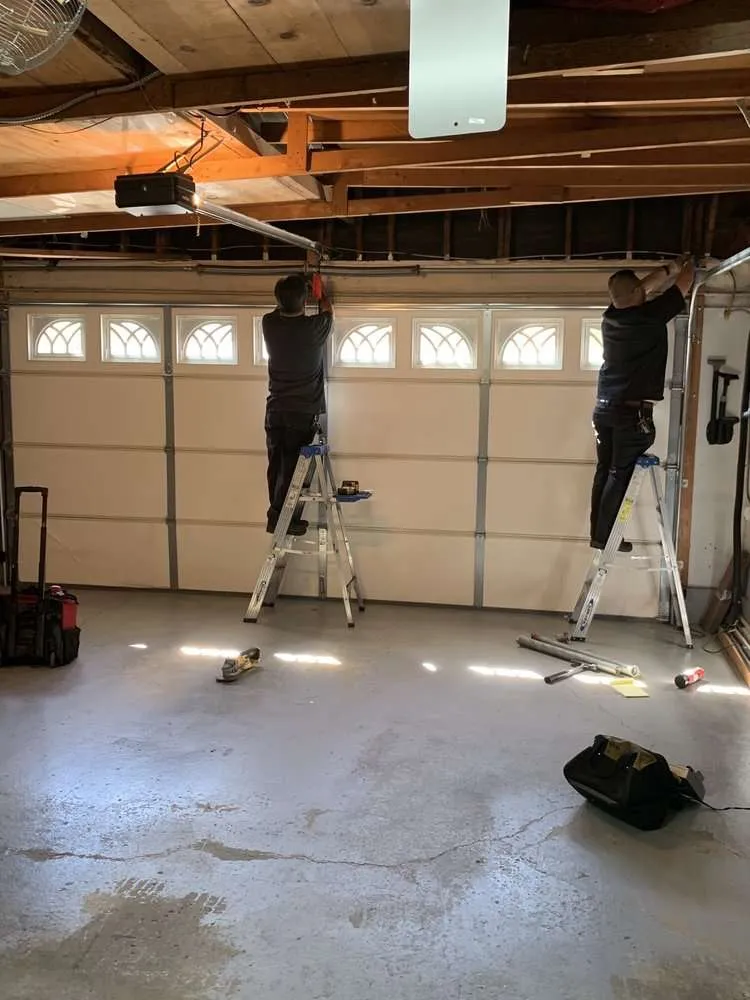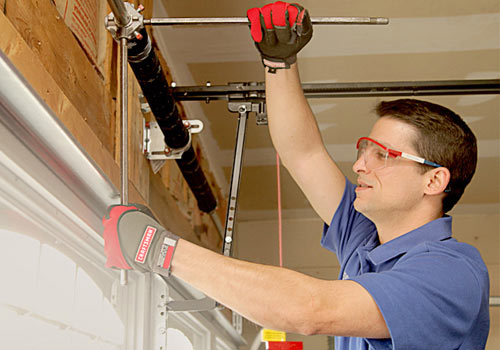Experienced Garage Door Service to Handle Damage Efficiently
Experienced Garage Door Service to Handle Damage Efficiently
Blog Article
Typical Garage Door Troubles and Just How to Fix Them
Garage doors are necessary for both protection and convenience, yet they typically offer a range of typical problems that can frustrate homeowners. Troubles such as excessive sound throughout procedure, doors that fail to open or close, misaligned tracks, and malfunctioning remotes can arise without caution. While some problems may show up simple to solve, others may require an extra nuanced understanding of garage door auto mechanics. Addressing these problems effectively not just improves capability yet additionally extends the life of the door. One could wonder what steps are required to take on these challenges efficiently.
Noisy Garage Door Procedure
A noisy garage door operation can be a considerable source of nuisance for home owners, often showing underlying mechanical issues. Such disruptions may come from numerous causes, including damaged rollers, loose hardware, or insufficient lubrication. Recognizing the resource of the noise is vital for reliable resolution.
Over time, these parts can wear away, leading to grinding or squealing noises as the door moves. Furthermore, loosened screws or screws in the door system can develop rattling noises during operation.
One more contributing aspect is poor lubrication of the door's moving components. Applying a top notch lube to the tracks, springs, and rollers can greatly reduce rubbing and noise. Property owners ought to do this maintenance periodically to maintain ideal efficiency.
Finally, the garage door opener might likewise create noise due to its age or mechanical problems. If the noise lingers despite dealing with other aspects, getting in touch with a specialist for an extensive evaluation and possible repair may be required.
Door Won't Open Up or Shut
Experiencing a garage door that will not open up or close can be exceptionally frustrating and often signals a breakdown within the system. A number of aspects can add to this problem, and determining the root reason is essential for effective resolution.

Following, examine the security sensing units situated at the base of the door. These sensors can become misaligned or obstructed by debris, protecting against the door from operating appropriately. Clean the sensors with a soft fabric and guarantee they are lined up.
Furthermore, the garage door's interior elements must be evaluated. Issues such as a busted springtime, worn-out rollers, or a damaged opener can impede activity. If any kind of components appear to be harmed, it may be suggested to seek advice from an expert for fixings.
Misaligned Tracks
(Effortless Process)Misaligned tracks can badly interrupt the smooth procedure of a garage door, bring about functional failures such as unequal motion or complete immobilization. This problem normally emerges due to a variety of aspects, consisting of wear and tear, accidental influences, or incorrect setup. When the tracks are misaligned, the rollers can stagnate freely, which not just strains the motor but additionally poses safety and security risks.
If you discover any type of discrepancies, it is critical to attend to the problem without delay. Very carefully tap the track back into its appropriate setting using a rubber club or a comparable tool, guaranteeing it is straight and degree.
Normal maintenance, including cleansing the tracks and guaranteeing rollers are in great condition, can protect against future imbalances. By resolving misaligned tracks promptly, you can bring back the performance of your garage door and boost its long life.
Broken Springs
Amongst the different elements of a garage door system, broken springtimes are one of one of the most common issues that can considerably hamper its capability. Garage door springtimes are crucial for stabilizing the weight of the door, enabling smooth opening and closing. When a spring breaks, it can bring about a door that is tough to operate or, in many cases, completely inoperable.
There are two main kinds of springs: torsion springtimes, which are placed over the door, and expansion springs, found on either side. Indicators of a damaged springtime include a door that won't open up, a noticeable space in the spring, or a loud sound during site link procedure. Attempting to operate a garage door with a damaged springtime can cause further damage to the door or the opener.
Repairing damaged springtimes is not a DIY job; it calls for specialized devices and proficiency as a result of the high tension included. It is advisable to speak with a professional specialist that can safely replace the springtimes and guarantee the door is effectively balanced. Regular maintenance and assessments can aid stop spring failures and expand the lifespan of the garage door system.
Remote Issues

The primary step is to examine the batteries in the remote. Replace them if they are weak or dead. If the remote still stops working to run, check the garage door opener to make certain that its sensing units are clean and unblocked. Dirt, debris, or misalignment might prevent the signal transmission in between the remote and the opener.
Interference from other digital gadgets can also impede remote functionality. Guarantee that close-by devices, such as cordless routers or cordless phones, are not causing disturbances. garage door service. If interference is suspected, attempt moving these tools additionally away from the garage door opener
In many cases, the remote might require to be reprogrammed. Seek advice from the maker's standards to reset the remote control and synchronize it with the garage door opener. If all else fails and the remote proceeds to malfunction, think about consulting an expert technician for an extensive inspection and possible substitute of the remote or opener.
Final Thought
(Reliable Partners)In recap, common garage door issues can substantially influence capability and safety. Addressing noisy procedure involves lubrication and tightening up hardware, while issues with opening or closing call for examination of power resources and sensors. Misaligned tracks can be remedied via adjustment, although damaged springs necessitate professional intervention. Push-button control breakdowns usually develop from weak batteries or disturbance, which can be fixed via substitute or reprogramming. Positive maintenance and prompt repairs can ensure optimal performance and longevity of garage doors.
Report this page